
Seven Nonfinancial Books That Made Me a Better Financial Professional
Posted by Jason Apollo Voss on Oct 23, 2013 in Blog | 0 commentsAmong the many things that my years in finance have taught me is that the more well-rounded you are, the better you are as a financial professional. Investing demands that you be a polymath — knowing a lot about many things (including nonfinancial topics) and how those things interconnect into an organic whole.
In shaping my mind to be a better financial pro, here are some of the books that I read that changed how I perceive and understand the world.
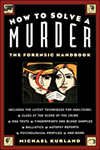 How to Solve a Murder: The Forensic Handbook by Michael Kurland
How to Solve a Murder: The Forensic Handbook by Michael Kurland
Being a successful investor is just like being a successful detective. If you invite 10 detectives to look at a crime scene — say, a murder or a bank robbery — there is certainly something to be said for the diligent collection of facts and knowing what kinds of information can be gleaned from facts. These are all of the left-brained, analytical aspects of consciousness. But the detective that solves the crime is not necessarily the most analytical; no, the detective that solves the crime is the one that uses her creativity to reconstruct a story that connects all of the facts together into a cohesive whole. Crimes are also solved by another right-brained activity: assessment and understanding of human motivations and choices driven by those motivations. How to Solve a Murder is written for authors wanting to write more effective detective novels. When I was in graduate business school this book helped me to understand a detective’s mindset. I know I was a better detective — er, uh, investor — because of it.
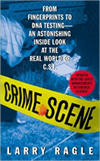 Crime Scene: From Fingerprints to DNA Testing — An Astonishing Inside Look at the Real World of C.S.I. by Larry Ragle
Crime Scene: From Fingerprints to DNA Testing — An Astonishing Inside Look at the Real World of C.S.I. by Larry Ragle
Long before the television show CSI popularized crime scene investigation this kind of material was incredibly hard for lay audiences to find. Ragle rectified all of this when he began writing about this subject in the mid-1990s. Unlike the book I named just above, this book contains much more of the hard core techniques employed by detectives.
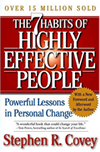 The 7 Habits of Highly Effective People by Stephen R. Covey
The 7 Habits of Highly Effective People by Stephen R. Covey
Time is in fixed supply, and for investors the demands on their time are nearly infinite. That is because the news flow is never ending and very rich; and that news flow drives perceptions of value for the securities you own. To succeed as a financial professional requires that you have amazing powers of personal organization. The 7 Habits of Highly Effective People is a classic in personal organization. As you read this book, you will discover that you already do many of the things discussed — but there is tremendous value in the overall framework provided, as well as in just identifying the personal skills needed. Don’t make the mistake that some of my fellow graduate school cohorts made when reading this book: Don’t dismiss the material because of its sincerity.
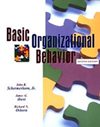 Basic Organizational Behavior by John R. Schermerhorn, James G. Hunt, and Richard N. Osborn
Basic Organizational Behavior by John R. Schermerhorn, James G. Hunt, and Richard N. Osborn
To succeed as a financial professional, you need to be more than a successful analyst. Why? You have to work with other human beings in order to get your work done. You will be working with fellow analysts and a supervisor, such as a portfolio manager or chief investment officer, and you need to get along with these people. Basic Organizational Behavior is powerful career lubricant: it allows you to perceive the interwovenness of behavior and how it creates culture within a firm. The book’s famous “forming-storming-norming-performing” framework alone is worth the price.
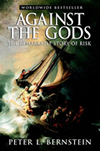 Against the Gods: The Remarkable Story of Risk by Peter L. Bernstein
Against the Gods: The Remarkable Story of Risk by Peter L. Bernstein
Understanding how mathematicians describe risk philosophically and numerically lies at the heart of modern finance and modern decision making. Bernstein tells the story from its very beginning thousands of years ago and demonstrates why statistics and risk-management are among the greatest inventions of human beings. Pay particularly close attention to gaps between real-world phenomena and the limits of math to describe those same events.
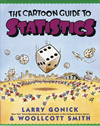 The Cartoon Guide to Statistics by Larry Gonick and Woollcott Smith
The Cartoon Guide to Statistics by Larry Gonick and Woollcott Smith
This may seem a silly choice for a CFA Institute content director, but I actually think it is the finest book written on statistics, and I have read four other, much more academic books on the topic. The Cartoon Guide to Statistics, however, explains statistics in such a way that you can understand the philosophy behind the mathematics. In other words, you become a better financial professional because you are able to better synthesize the elements of statistics: geometry, algebra, calculus, and probability theory — all of which have been borrowed from in order to create what we call “statistics.” Last, you cannot be a successful financial pro and not understand statistics. Many pros are hiding their ignorance; of that I assure you. You do not have to be one of those people.
 The Yoga-Sutra of Patanjali: A New Translation with Commentary by Patanjali and Chip Hartranft
The Yoga-Sutra of Patanjali: A New Translation with Commentary by Patanjali and Chip Hartranft
If you understand your mind and you have conscious awareness, you can come into better accord with reality and can avoid prejudices, preferences, and mental biases. This skill lies at the very heart of being a successful investor, and put another way it is the definition of wisdom: the degree to which you are in accord with reality. So, why not turn to a thousands-year-old text about meditation and conscious awareness? In particular, I found the commentary provided by Chip Hartranft to be spot-on in relating these ancient concepts to my own experience with meditation practice. What is more, in my opinion, meditation is the antidote to the many admonitions against judgment errors identified by behavioral finance!
If you liked this post, don’t forget to subscribe to the Enterprising Investor.
Photo credit: ©iStockphoto.com/olaser
Originally published on CFA Institute’s Enterprising Investor.
